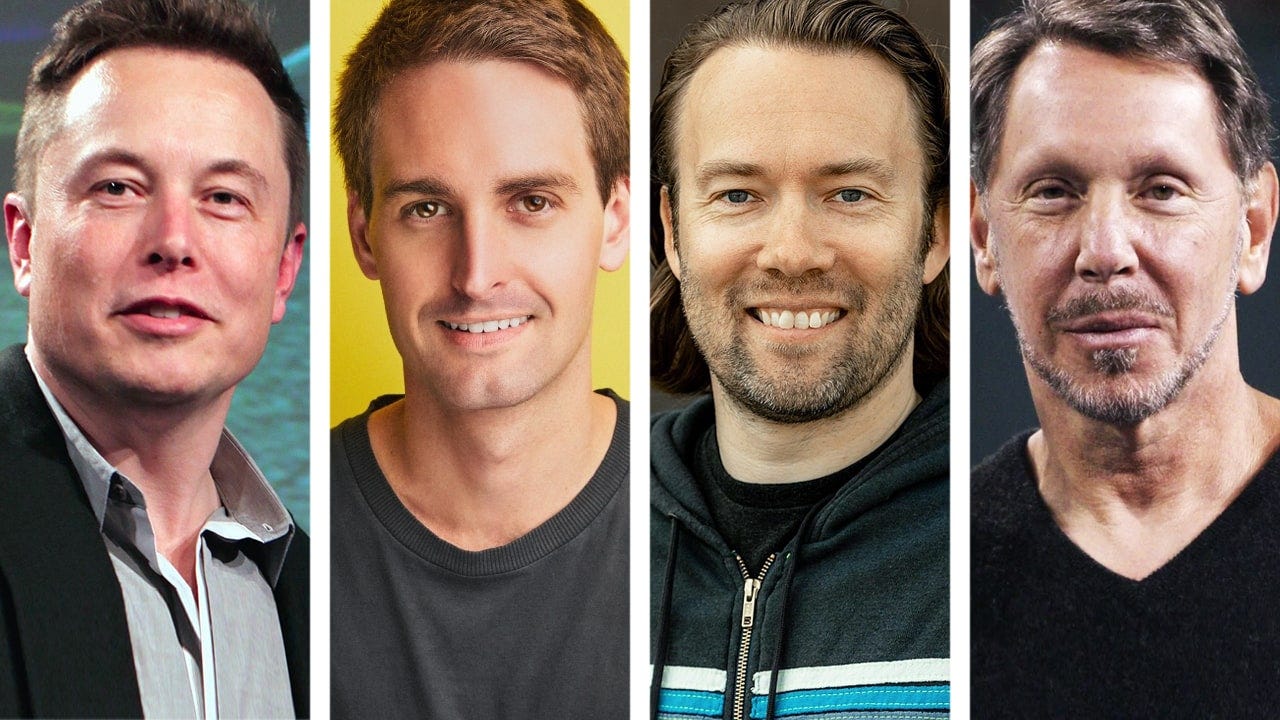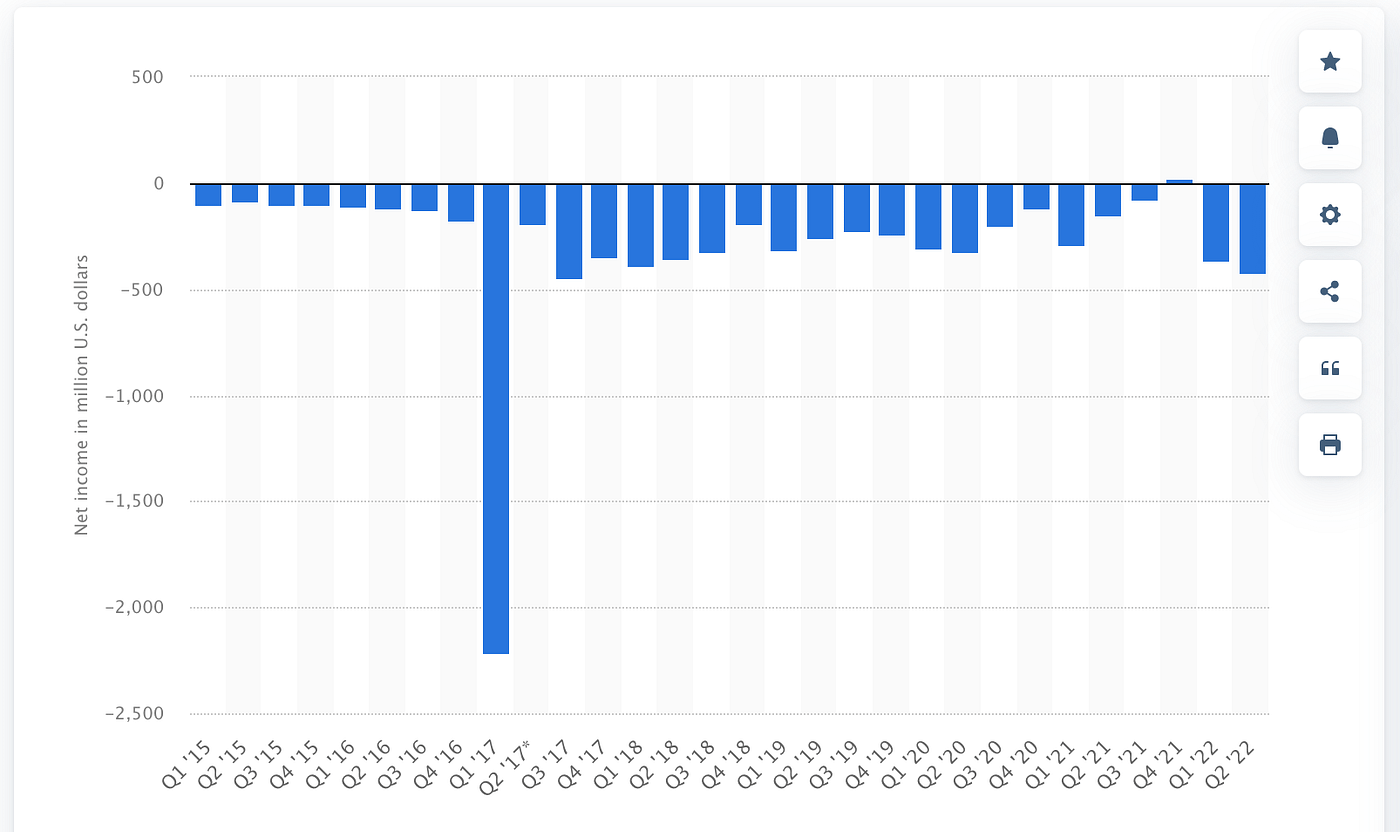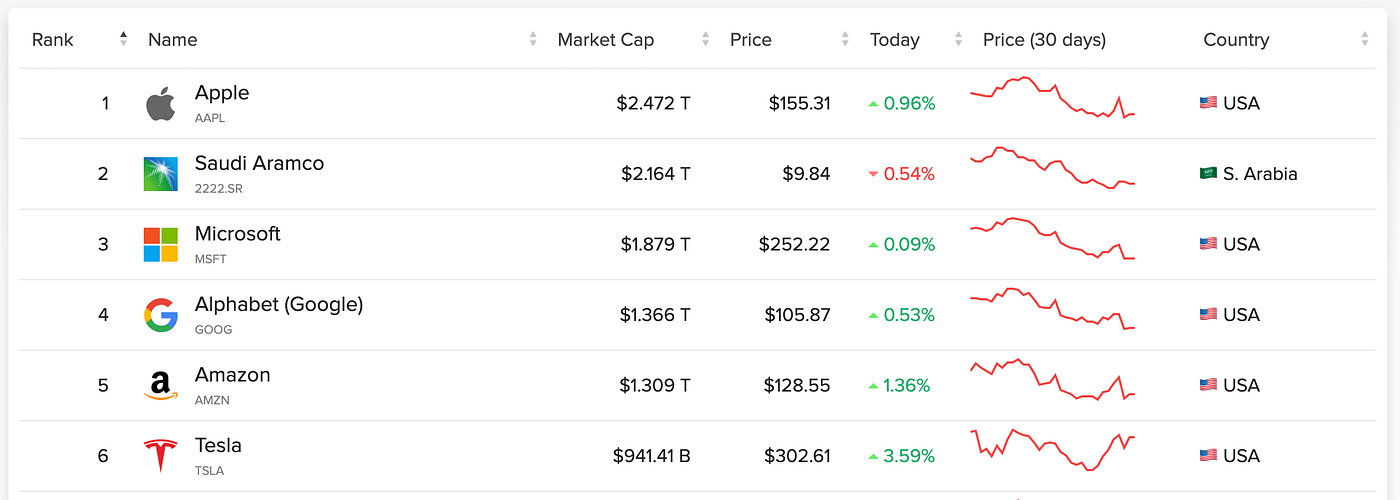How to Make Money out of Thin Air | by Joseph Mavericks | Sep, 2022
What it means to be an entrepreneur in 2022

In June 2015, Snapchat’s CEO Evan Spiegel closed a $50 million financing round. Instead of investing it all into the company, Spiegel went and used a nice chunk of that change to buy himself a Ferrari. This didn’t look good from the start. 2 years later, in June 2017, he was awarded an $800 million bonus for taking the company public at a $33 billion valuation. The most absurd part of that deal? His company lost $3.4 billion that year.
You could argue this was part of an aggressive growth strategy. At this point in time, Snapchat was still struggling to find ways to monetize its product, and all they had to keep rolling was investors money. Later down the line, they started playing around with advertising and made a lot of money from it. In fact, the company made $1.11 billion in revenue in the last quarter of 2022. The only problem is that it managed to burn through it all and beyond, ending June 2022 with $422 million in the red. There has only been one quarter in the more than 5 years since Snapchat went public where it made a profit: a mere $22.5 million at the end of August 2021. That’s not even enough to cover Spiegel’s $30 million mansion in Paris.

There are tons of stories similar to this one. Spotify, Airbnb, Pinterest, Dropbox… The reason these companies don’t make a dime is that they reinvest everything into ultra-aggressive growth, and the problem is that only a few make it out alive. The reason they’re worth billions is because of the insanity of the stock market, which we’ll dive into a little later.
On the other end of the spectrum, there are private companies like Basecamp, or Zapier, that make hundreds of millions in revenue every year, have no debt, no physical offices, and a ton of cash at hand. They don’t depend on a bunch of hungry billionaire investors to make a profit, and they’re fine with growing slowly but surely, away from the absurdities of the stock market.
As an entrepreneur, it’s crucial to understand how both approaches to creating a company work, and in this article, we’ll cover each option in depth.
All this billion-dollar madness began when the stock market and the internet started mingling together in the late 90s, and early 2000s. The stock market is the place you go to if you want to buy a share in a company (among other things). When you buy a share in a company, you own a tiny piece of this company, and if it goes up in value you’ll be able to sell it for a profit on the same market.
Now, why would your share go up in value? Well, here we run into one of the first problems of the stock market: speculation.
“Nobody knows if the stock market is going up, down, or round in circles” — Mark Hanna
At the end of any trading day, your share will have either lost value or gained value (it can also keep the same value) and everyone has the same 50% chance of guessing that. You, me, Elon Musk, or the next big shot on Wall Street. That being said, there are some basic economic principles and variables that should make it easier for smart and knowledgeable people to anticipate what’s going to happen to your share(s). Things like:
- Revenue
- Net income
- EPS
- Margin
- Operating income
- …
Back a few decades ago, these used to play an important role in determining the direction of the stock price for a company (which is the price of your share), and of the overall stock market. But then again the internet came, and all those variables kind of went out the window. People became less rational, they started trusting the feelings and biases generated by the news, the search results, and everything internet-related, rather than looking at the numbers and believing in maths. Don’t get me wrong, there was also speculation back when the internet and iPads were not around, but everything was on a much smaller scale. The internet extrapolated that and made it a much bigger factor than it needed to be. These days, the market is driven by what happens online more than ever before, rather than how much a company makes, its margin, or its EPS. It’s not rational or mathematical anymore.
This piece is in no way intended to criticize any achievement by the entrepreneurs I mention. As often with those things, you shouldn’t blame the player, you should blame the game. It’s very easy to fall into the trappings of modern capitalism and global expansion, and only a few entrepreneurs manage to avoid them (which we cover in part 3 of this article). For those who don’t, it doesn’t discredit their achievements, but it makes them part of a system they don’t control, and it usually leads to greed, nonsense, and mistakes.
Take Elon Musk. He arguably created one of the most innovative and forward-thinking companies of our modern times: Tesla. In fact, he didn’t create it, he became the largest shareholder in it in 2004 and then turned it into what it is today. Tesla was founded in 2003 by Martin Eberhard and Marc Tarpenning.
Let’s look at some of Tesla’s latest numbers. In the first 2 quarters of 2022, the company produced 568,000 vehicles. Tesla’s market cap (aka how much it’s worth) sits at $899.88 billion as I write this article, enough to earn it the 6th spot on the “largest companies in the world” list:

Let’s now look at Toyota’s numbers, one of Tesla’s direct competitors (and a company that’s been around for 85 years). They’re expected to finish 2022 with a production of 9.7 million vehicles. In a single month, Toyota produces more cars than Tesla outputs in half a year. Yet Toyota’s market cap sits at $197.98 billion, making it the 43rd largest company in the world:

Quick recap here:
- Tesla → 568,000 vehicles produced in 6 months → $899.88B market cap
- Toyota → 4.85 million vehicles produced in 6 months → $197.98B market cap
How is Tesla nearly 4.5 times bigger than Toyota? How does this add up? Well, it doesn’t. Toyota had revenue of $62.3 billion in the second quarter of 2022. Tesla’s revenue for the same period was $16.5 billion, or 3.5 times less.
Even if Toyota had a huge inventory, and if Tesla was selling all its cars at double the price they sell now, it still wouldn’t make more money than Toyota. This goes back to speculation and the irrational ways of the human brain. Tesla is cool, hip, people see it as the company of the future. Elon Musk tweets, loves being in the news, and making bold announcements. This builds up hype around the company, and so people buy more shares of it. This sends the price higher, and because the market cap (aka how much the company is worth) is directly correlated to the share price, it creates a capitalist mammoth that appears to rival Microsoft and Apple, companies that are three times older and way more profitable than Tesla.
The price increase also makes Elon Musk a very wealthy man, because as the largest shareholder of the company he owns a ton of shares (172.6 million to be precise). As a result, a slight increase in the company stock price has an exponential effect on his net worth, which sends him into the centi-billionaire stratosphere. As of this writing, his net worth is $272.7 billion.
But none of this is actual money. Elon Musk doesn’t have hundreds of billions in cash sitting in a bank account. He only has a piece of paper that says he owns a big slice of a cake worth $899.88B (the worth of the company). So how does one turn this piece of paper into cash?
Well for starters, Elon Musk could do like every investor or employee looking to liquidate their wealth and sell a bunch of stock, but in his case, it’s probably not the best way to do it, for a few reasons:
- When you’re the CEO of the 6th biggest company in the world, you can easily trigger a selling frenzy if you get rid of even a small chunk of stock. People will start panicking, they will read the sale as: “He doesn’t believe in the company anymore, he’s selling so I’ll do the same.”
- Even if people don’t “panic sell” when you sell your shares, investors and stakeholders won’t like the move. Again, as a CEO you should show that you believe in the company and stay committed and invested in it.
Instead, the easiest way to convert your paper worth into cash is also one of the most nonsensical: go to the bank and get a loan using your shares as collateral. When you’re a billionaire, you can get an almost endless line of credit this way, and this is a very common practice among CEOs of Fortune 500 companies. Larry Elison (Oracle), Jim Walton (Walmart), and Stephen Schwarzman (Blackstone) are all known to use the same practice to turn their paper worth into cash without having to sell any of their shares.
Congrats, you’ve just learned how to convert thin air into cash! In the case of Tesla, this is somewhat acceptable because even if the company’s valuation is completely absurd and ludicrous, at least it’s making money. But the practice of borrowing millions (or billions) against a piece of paper becomes an even bigger problem when your company is not even making a dime in profit like we’ve seen with Snapchat in the introduction. So there must be a better way, right?
The reason behind Silicon Valley burning through hundreds of billions of dollars of investors’ money is that these guys only see 2 scenarios to make a profit from their investment, and none include something along the lines of “the company should find a way to make money”:
- By going public. Since they own a slice of the company, they’ll be able to cash out if the company gets listed on the stock market by selling their shares or borrowing a ton of money against a piece of paper that says they have shares (as we explained earlier). They don’t have to care about the company making money, they only have to care about the stock going up.
- By selling the company. Investors usually like this approach less, because it doesn’t give them long-term, exponential returns. Once the company sells they only get a return on their investment once, they don’t have the potential to delay selling shares or only selling a portion of them. But still, with this option they don’t have to care about the company making money either, they just have to push for as high of a valuation as possible.
Both of these outcomes are based on a very aggressive growth strategy, based itself on one of the humans’ biggest sins: greed, lust, and gluttony. Investors want billions, not millions. They want 10 houses, not one. And like Evan Spiegel, they want a Ferrari, not a Toyota. Thankfully, there are also some people who can see through the capitalist chaos and decide to adopt a much more reasonable approach. Companies that grow slowly but surely, don’t award $800 million bonuses, and stay private in order to stay away from the stock market.
Zapier
Zapier is a web-based product that allows end users to integrate the applications they use and automate workflows. The company makes over $140 million in annual recurring revenue. It was founded in 2011 and has been profitable since 2014. 100% of Zapier’s workforce is remote, and they hold over $100 million on their balance sheets, meaning they most likely will never need to raise more money (and therefore depend on investors) even in the worst of scenarios. They don’t owe money to anyone, not even a landlord.
Zapier is worth $5 billion and only ever raised $1.3 million from investors. Everything else has been pure, organic growth. How do you get to a $5 billion valuation with $1.3 million in seed capital and $100 million in recurring revenue? By looking at how much the company makes and multiplying that number based on other internal factors. You also need to look at how much private investors are willing to lend you for what percentage of the company. If somebody lends you $100 million in exchange for 25% of your company, then your company is worth $400 million ($100M / 0.25). It’s still a bit of a “pie in the sky” approach, but it’s a lot more reasonable than what we’ve seen with Tesla or Snapchat.
Basecamp
Basecamp is another company that was mostly remote since its inception in the late 90s (it was first called 37signals) and then went fully remote in 2020. They don’t disclose their revenue publicly, but as Jason Fried (Basecamp co-founder) said himself in a response to a question about his company’s revenue on Quora:
“We don’t disclose our annual revenues or profits, but both are in the millions. We’ve been profitable every year since we launched the company in 1999.” — Jason Fried
Basecamp’s achievement is even more impressive because it survived the dotcom crash of the 2000s while remaining private, and it hasn’t given in to the temptation of selling or going public for the nearly 25 years it’s been around. While even Zapier’s cofounder Wade Foster admits he might start thinking about selling or going public one day, Basecamp’s founders live off the company’s recurring revenue, and they don’t intend on seeking external capital or selling any time soon. They’re not in a rush to become a unicorn (a company worth over $1B in Silicon Valley’s jargon). They’re just growing slowly but surely.
In 2010, Basecamp co-founders Jason Fried and David Heinemeier Hansson released the bestselling book Rework, in which they explain the foundational principles for their company, summed up in the list below:
Grow slowly or not at allBuild half a productSay no to meetingsGo to sleepUnderdo your competitors
I highly recommend you read this book, these guys were 10 years ahead of their time in 2010, and their work is now more relevant than ever. Their principles go against every single one of Silicon Valley’s culture of hustling, putting in 18-hour days, and sleeping at the office. It’s not something people are used to hearing, but it’s definitely something worth paying attention to.